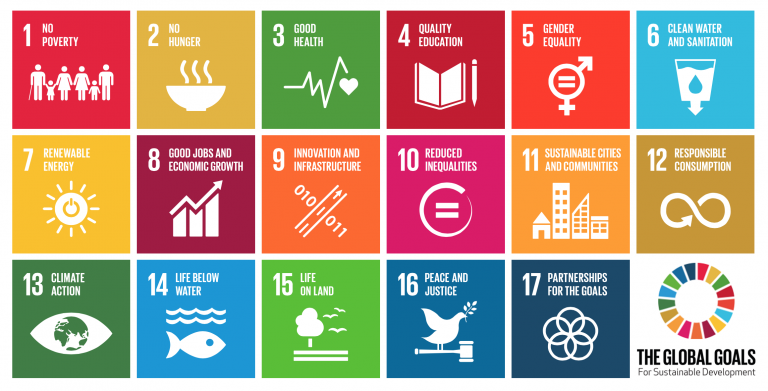Interpreting the Quadruple Bottom Line
Have you noticed that recently more and more people seem to be talking about the Quadruple Bottom Line (QBL)? Is it really something new? Does it really exist or is it ‘another clever buzz-word from sustainability consultants’?
Perhaps a good starting place is to remind ourselves of QBL’s predecessor, the Triple Bottom Line (TBL). The TBL is a sustainability framework, that was adopted by the corporate sector to measure and report progress against the non-financial economic and social bottom-lines. The key word here is ‘sustainability framework’, but I’ll come back to that.
We commonly refer to the TBL as people, planet and profit. So what’s the fourth bottom line that we all seem to be referring to? At this moment in time there is no general standard (not even a Wikipedia entry!), and so, we would like to cite and pose a number of opinions defining the fourth line in an effort to find clarity…
[caldera_form id=”CF59dc5775dc998″]
Governance and Ethics
The Global Reporting Initiative is supporting this notion. They were instrumental in establishing the TBL concept across the global corporate sector. To begin, let me take you back to the prevailing corporate context when the TBL was created:
- Corporate adoption of sustainability practices were not part of mainstream business thinking, and I would argue,
- The TBL and its accounting terminology was a clever way of making a business case for a largely skeptical audience.
Since then, the corporate sustainability context has evolved significantly from a mostly ‘license to operate’ mindset to an increasing sense of ethical responsibility and moral purpose (at least amongst the corporate leaders in the field). In this context, the notion of good governance is important. A company can’t be ethically responsible and operate to a moral purpose, without good governance to provide assurance. Governance, in fact is not a new measure in the sustainability field, ask any public sector sustainability expert. I agree that governance is important, but is it really is another bottom line? Are we not at risk of confusing the means (good governance) with the end (stronger social, environmental and financial bottom lines)?
Context-based Sustainability
Another interesting definition is Henk Hadders, ‘Adaptive Quadruple Bottom Line Scorecard’ (AQBLS) who is using Context Based Sustainability (CBS) to differentiate the economic and financial bottom line. CBS is defined as “an approach for measuring, managing and reporting the sustainability performance of organizations that takes contextually relevant social, economic and environmental limits and thresholds explicitly into account”. Hadders therefore, defines the QBL as the financial bottom line, plus, a triple bottom line including broader social, economic and environmental measures.
Spirit
A third alternative perspective of the Fourth Bottom Line is offered by the Association for Sustainable Living. In fact, they are calling it the first bottom line and that is: Spirit. They remind us that, “Indigenous peoples throughout the world have had an understanding of the principles of sustainability, and have lived sustainable lifestyles, for millennia. Floyd Red Crow Westerman, a Hopi Indian elder described the sustainability relationship as one based on an understanding of spirit and the transience of human lifespans. He describes the problems of sustainability as humanity’s inability to live on earth in a spiritual way. He describes that if humanity is not spiritually connected to the earth and does understand the spiritual reality of how to live on earth, it is likely humanity will not survive.”
Alternative Frameworks
As I pointed out earlier in my piece, the TBL or even the QBL, are not the only frameworks available to us. There are other highly effective sustainability frameworks to chose from, many of which have more than the 3 dimensions of economic, social and environmental and include,
5 Capitals: Forum for the Future’s 5 Capitals framework, which introduces Human Capital and Manufactured Capital to the usual suspects (people, planet & profit).
Sustainability Compass: Alan Atkisson’s Sustainability Compass works with four key indicators including Nature, Society, Economy and Well-being.
Whilst some will strongly advocate the one framework over all others, our view is that context matters. The context we are operating in is fundamental and must be considered when we are reviewing, critiquing or selecting our sustainability frameworks.
So what should we conclude about the QBL?
The fact that different definitions of the fourth bottom line exist, serves as a reminder that frameworks do not define reality, but they provide us with a lens to help us make sense of our current reality and work towards a desired future. We must constantly re-consider how well our frameworks are serving us, and be prepared to adapt, evolve or even change these frameworks to ensure that they remain a relevant tool in our leadership towards a more sustainable future.
Given the diverse variety of definitions of the fourth bottom-line, I would be interested to learn and connect with definitions, which you know of and even perhaps have worked with? Please add you comments below.
[caldera_form id=”CF59dc5775dc998″]





Leave a Reply